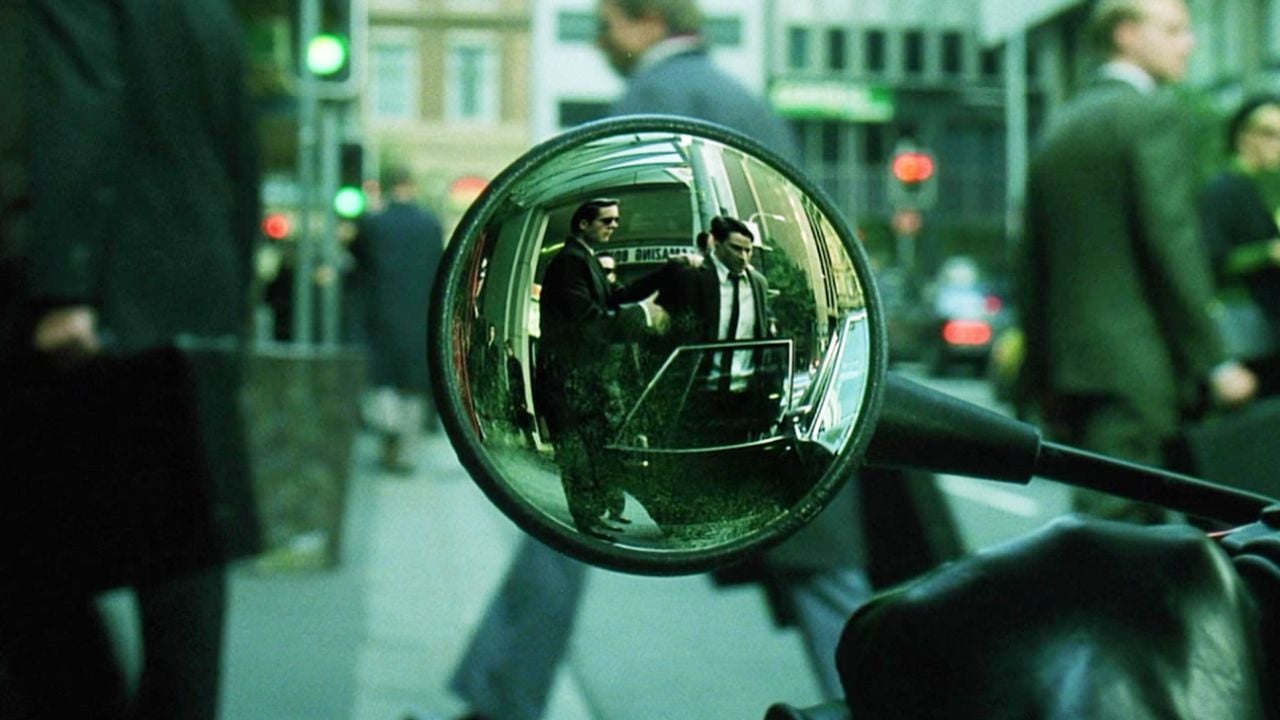Discover the projects of leading architectural firms in different cities around the world
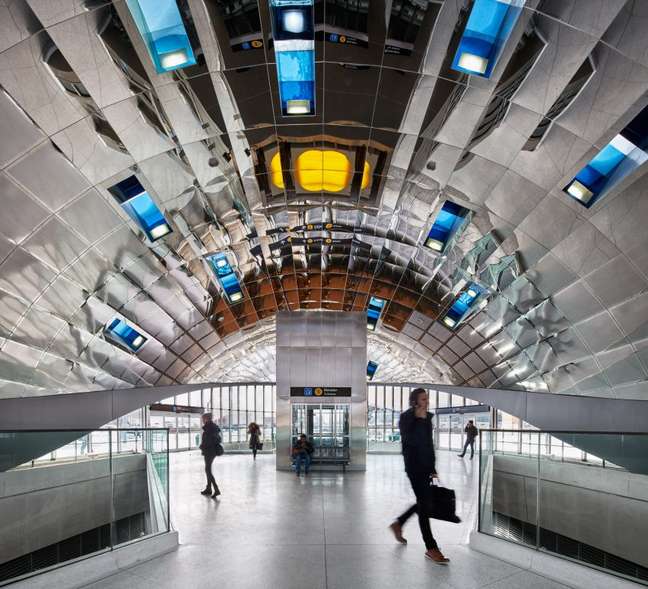
Yes, these are times for reflection on the importance of public transport in the fight against climate change. Therefore, it is worth praising the metro systems in large cities and valuing good projects that combine urban mobility with good architecture.
Since the turn of the millennium, many underground railway stations have been upgraded in various cities around the world. Here we have selected ten great projects to discover and learn more.
1- Elizabeth Line, United Kingdom
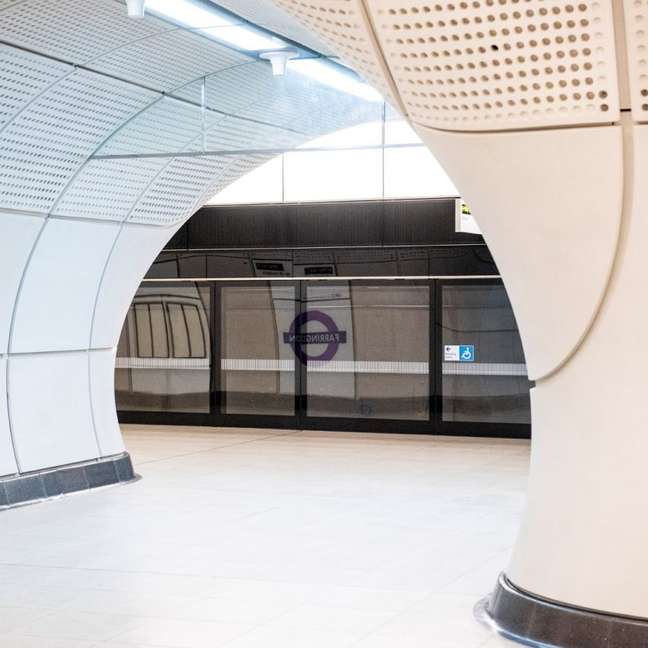
The Elizabeth Line includes 10 new central subway stations designed by architectural firms including Aedas, Hawkins \ Brown, WilkinsonEyre and Allies and Morrison. These stations have been created to be functional and discreet, with a design that follows the smooth curves of railway tunnels, to reduce the risk of collisions between passengers.
2. Line 9, China
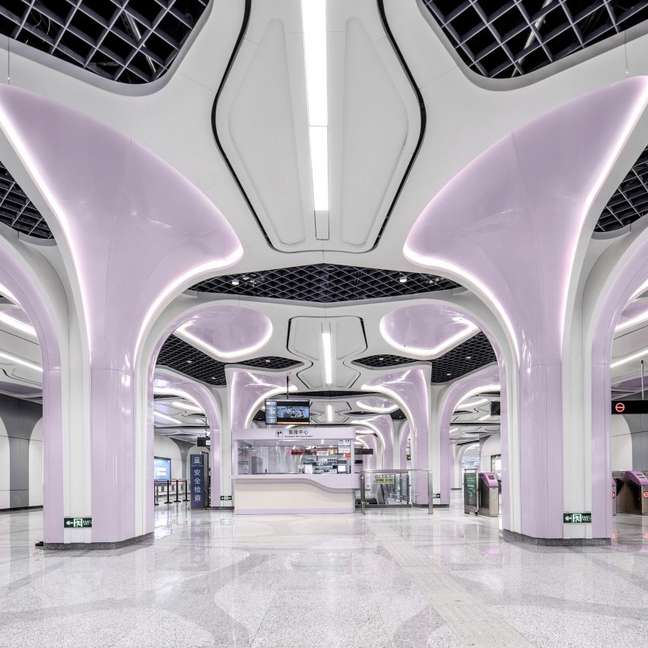
The architectural firms J&A and Sepanta Design have built 13 stations for line 9 of the Chengdu metro network in China. 22 kilometers long, this metro line has stations with a mix of flowing lines and shapes inspired by local flora and fauna. For example, Jincheng Avenue’s design in shades of lilac is inspired by lotus flowers.
Hailed as the first unmanned metro line in western China, Line 9 trains communicate using the 5G mobile network.
3. Orienktaj station, Denmark
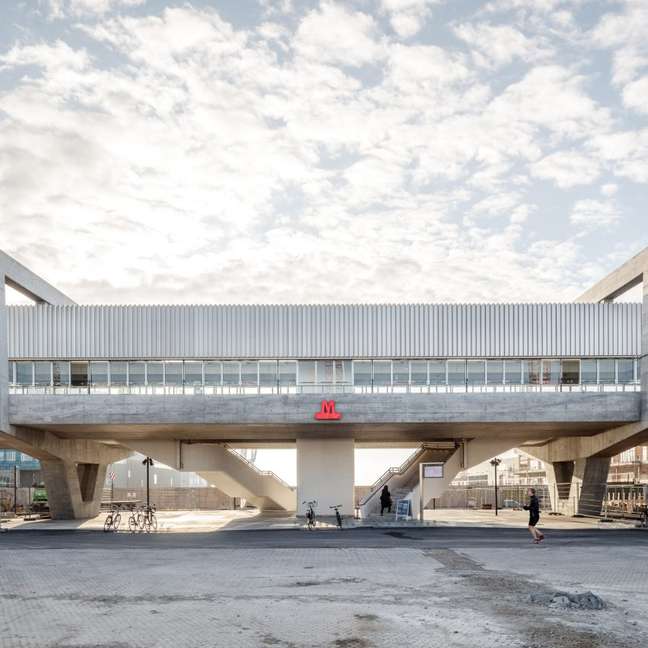
Architectural firm Cobe and engineering firm Arup have created two metro stations as part of a port development in Copenhagen, one of which is elevated and forms a reference structure.
Orientkaj Station celebrates the industrial architecture of the port, with a broad, bold and simple silhouette that evokes the cranes, containers and warehouses we see on the docks.
4. Stations in Doha, Qatar
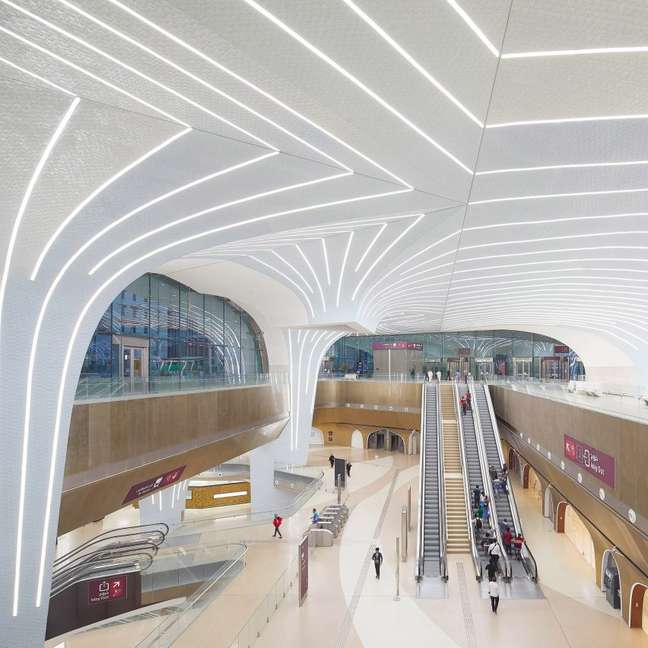
Thirty-seven domed stations were created for Doha’s driverless metro system. The Dutch architecture firm UNStudio signs the project, in collaboration with the Qatar Railway Architecture Department.
According to UNStudio, the station’s projects aim to preserve Qatari’s traditional architecture and Doha’s history, while reflecting the city’s modern reputation.
5. Noord / Zuidlijn stations, the Netherlands
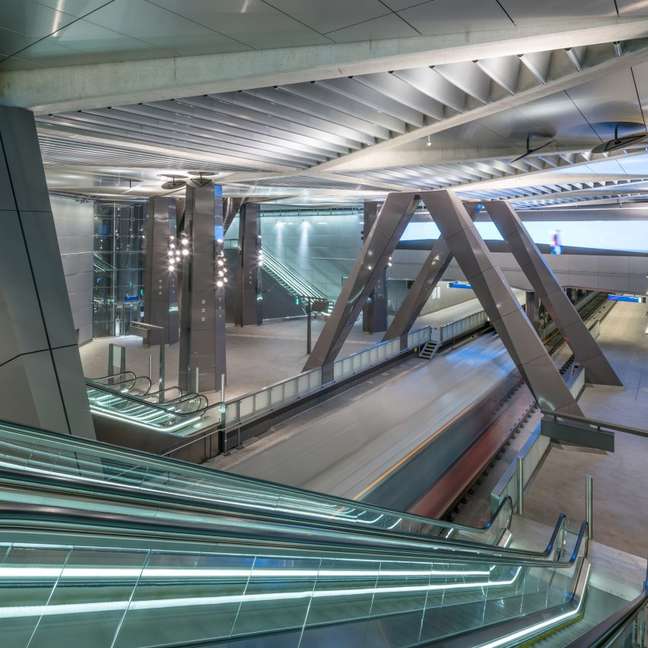
Dutch studio Benthem Crouwel Architects designed seven stations for the Noord / Zuidlijn metro line in Amsterdam. Each station – two above ground and five below ground – is connected by a palette of soft materials designed to be easy to clean and replace, while the entrances have been left uncovered to create a sense of continuous public space.
6. Vaughan Metropolitan Center Station, Canada
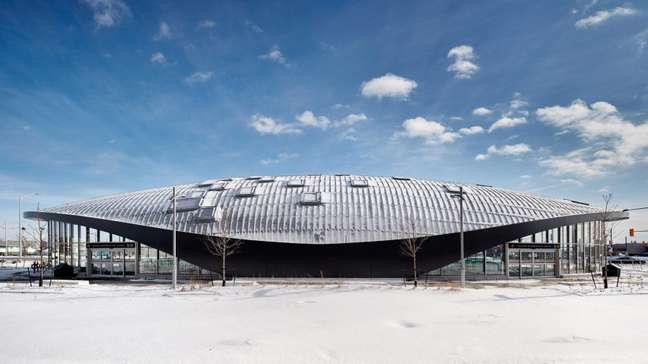
Vaughan Metropolitan Center Station is located in Toronto, Canada. Global firm Grimshaw Architects created a shell-shaped roof with mirrors underneath for the station, designed to redirect natural and artificial light into the space.
7. ANDWilhelm-Leuschner-Platz S-Bahn station, Germany
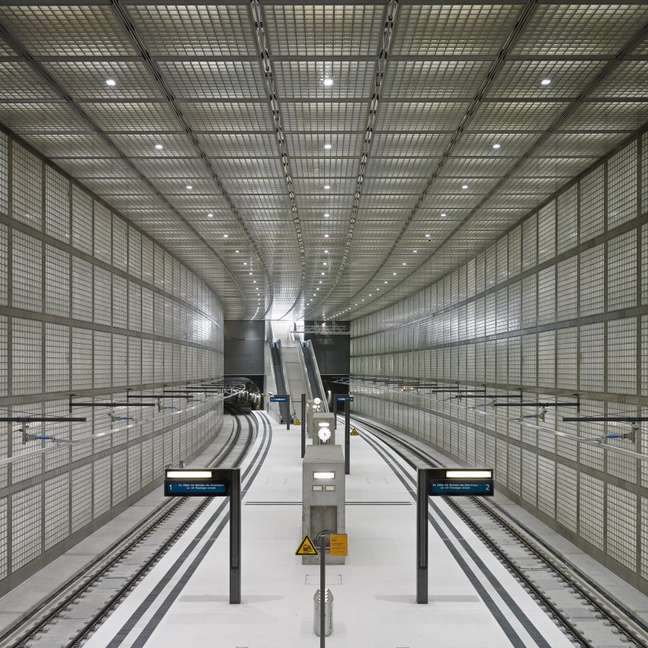
Illuminated glass blocks flank the 40-meter-long tunnel that makes up this Leipzig metro station, designed by Swiss architect Max Dudler. A palette of raw concrete materials contrasts with these illuminated elements, while the deck features a light terrazzo finish.
Completed in 2013, Dudler won a station design competition in 1997 with a proposal for a light tunnel.
8. Angle Lake and Plaza Transit Station, USA
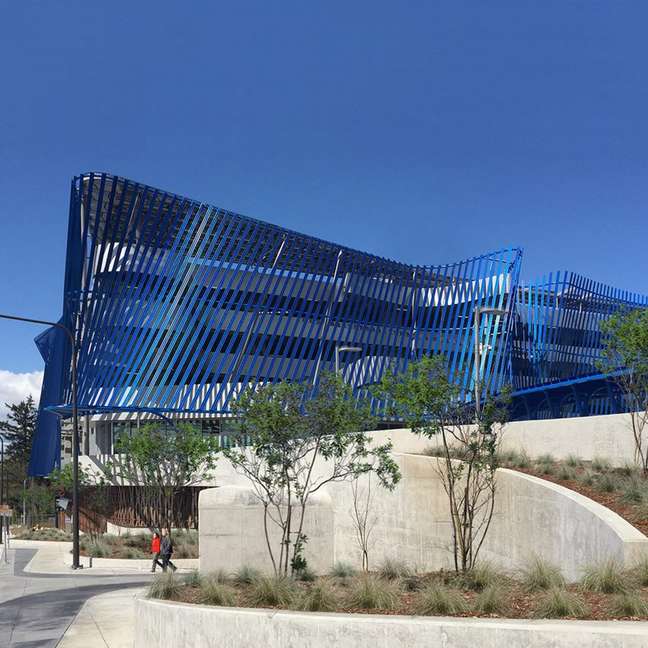
Californian company Brooks + Scarpa wrapped a Seattle transit installation in a bright, rippling blue aluminum screen that draws inspiration from the movement of a dance performance.
More than 7,500 panels were used to create the canvas, formed by connecting two curves with a series of straight lines. Angle Lake Transit Station and Plaza is elevated rather than underground, serving as a stop along a light rail line connecting Seattle Airport with downtown and the University of Washington.
9. Toronto-York Spadina subway extension project, Canada
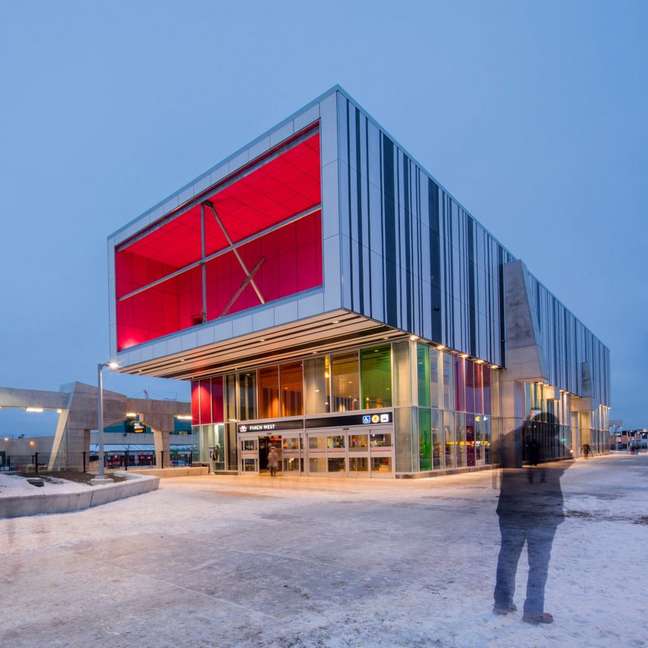
As part of the Spadina-Toronto-York subway extension project, British architect Will Alsop has created two stations in the Canadian city’s Pioneer Village and Finch West neighborhoods.
Both stations are characterized by cantilevered roofs, internal walls in polished concrete and distinctive colors that make them recognizable in all their spaces.
“The entrances to the metro station were designed as a pair of sculptural structures; their height exceeded what was necessary to increase their visibility,” said Alsop.
10. Stations of the M4 metro line, Hungary
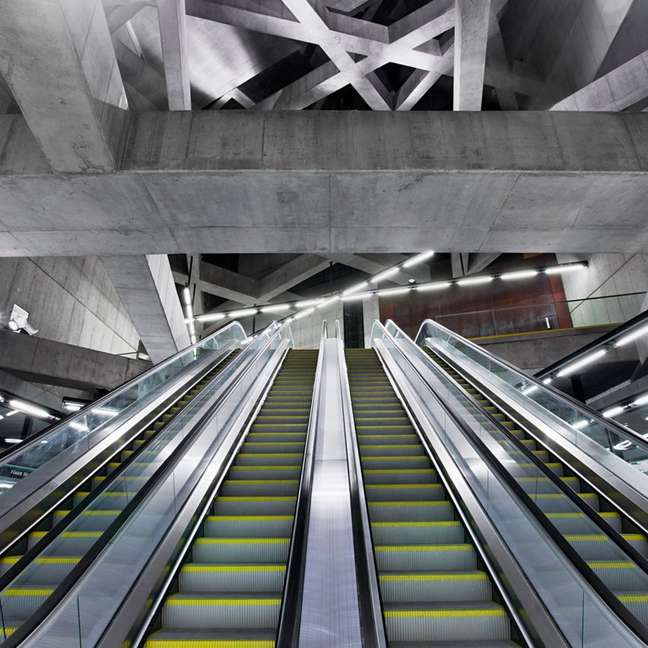
Local firm Spora Architects designed a pair of stations for the M4 metro line in Budapest, with walls carved out of crossed reinforced concrete beams.
Street level daylight was introduced into stations through a construction method where spaces were dug from top to bottom rather than extracted.
* Via Dezeen
Source: Terra
Benjamin Smith is a fashion journalist and author at Gossipify, known for his coverage of the latest fashion trends and industry insights. He writes about clothing, shoes, accessories, and runway shows, providing in-depth analysis and unique perspectives. He’s respected for his ability to spot emerging designers and trends, and for providing practical fashion advice to readers.




![Such a wonderful sun in advance: Summary of the episode of Thursday on August 14, 2025 [SPOILERS] Such a wonderful sun in advance: Summary of the episode of Thursday on August 14, 2025 [SPOILERS]](https://fr.web.img6.acsta.net/img/f2/d1/f2d1b407f018a903d063481a150a2e19.jpg)


